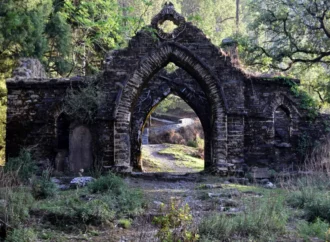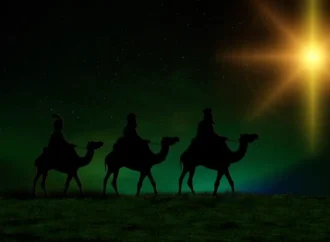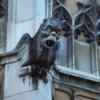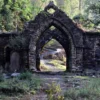Last week I posted an article about the pressing need to teach American history to our young. A follow-up piece focused on ways and resources for sharing the story of our country with elementary-aged students in the home and classroom. We’ll now conclude with an all-too-quick look at some tools that connect teens with their country’s past.
Having a comprehensive history of the United States in the home is essential, serving both as a book of reference and a timeline.
Wilfrid McClay’s “Land of Hope: An Invitation to the Great American Story” delivers a balanced take on the past, presenting injustices alongside our country’s extraordinary achievements. One reviewer called it “the most cheerful and inspiring history of America written so far this century.” A “Young Reader’s Edition” is available for middle-schoolers.
Published in 1997, and therefore somewhat dated, Paul Johnson’s “A History of the American People” makes an excellent companion volume for “Land of Hope.” To understand Johnson’s slant on American history, we have only to look at his opening line: “This book is dedicated to the people of America—strong, outspoken, intense in their convictions, sometimes wrong-headed but always generous and brave, with a passion for justice no nation has ever matched.”
Our Golden Age of Histories
Our teenagers are fortunate, for the last 50 years have brought multitudes of popular histories to our libraries and bookstores, accounts of the past aimed at a general rather than an academic audience. Just a few of these include Stephen Ambrose’s account of the Lewis and Clark expedition in “Undaunted Courage,” and his sagas of World War II, like “Band of Brothers,” while David McCullough’s “1776,” “John Adams,” and his portrait of the young Theodore Roosevelt in “Mornings on Horseback” appeal to many teens.
Explore the shelves of your local library for more gems like these. Let your students’ passions dictate their selections. If it’s the Civil War that sparks interest, for example, dozens of great histories and biographies are available.
Historical Fiction
Literature brings an equally bright treasure trove of titles for teens. For advanced readers, Kenneth Roberts’ novels like “Northwest Passage,” “Oliver Wiswell,” and “Rabble in Arms” are well-researched stories that breathe life into the colonial and Revolutionary War periods. Michael and Jeff Schaara’s Civil War trilogy – “Gods and Generals,” “Killer Angels,” and “The Last Full Measure” – is as good as it gets in historical fiction about the Civil War.
Betty Smith’s classic coming-of-age story, “A Tree Grows in Brooklyn,” brings alive the immigrant experience in the early 20th century. Harper Lee’s “To Kill a Mockingbird” takes readers into the Great Depression and the Jim Crow racism of that time, and is an excellent springboard for further investigation of these topics. “The Great Gatsby” gives students a feel for the Jazz Age of the 1920s; the short stories of Nathaniel Hawthorne, like “The Birth-Mark” and “Rappaccini’s Daughter,” give students the fashions, language, and courtesies of long ago, but with themes as pertinent as today’s headlines.
Movies and Other Media
Here again we find a wealth of riches. Based on David McCullough’s biography, the HBO miniseries “John Adams” won a trophy case worth of awards and is considered one of the finest miniseries in American television history. “The Patriot,” “Apollo 13,” “Cinderella Man,” “Saving Private Ryan,” and “Remember the Titans” are only a few of the motion pictures that either directly or indirectly teach the American past.
Look online for “podcasts about American history,” and you’ll find an array of choices. Also appearing online are virtual tours of museums, battlefields, historic homes, and towns and cities.
History Clubs
History clubs are a little-used vehicle for bringing together young people interested in the American story. Such an after-school program or a club for homeschoolers can blend all the resources mentioned above – reading and discussing books, watching movies together, arranging in-person visits to museums and historic sites. An adult mentor, preferably one with a passion for the past, can keep the discussions on track and the plans moving forward.
What Our Young People Will Gain
In my first of these three articles, I pointed out that we can’t really love something or someone we don’t know. If we don’t know the history of our country, our love for it will be paper-thin. If we want our young to love America, they must know America, which means acquiring an understanding of its past.
But the study of history brings other benefits to the young – and for that matter, to all of us. The past provides figures for emulation, men and women who valued character above money and power. Too many in our culture today take as their role models celebrities and influencers who often offer little in the way of virtue and much in the way of vice.
A solid grasp of history also gives us a sense of nuance about our fellow human beings that is sorely lacking in today’s politics and our culture. To study the lives of those who came before us is a painless way to learn more about people living today, those with whom we share a workspace or a neighborhood.
In these ways, the study of history deepens the humanity of our young people and makes them better equipped to face the challenges of the future.
—
The republication of this article is made possible by The Fred & Rheta Skelton Center for Cultural Renewal.
Image Credit: Pxhere
9 comments















9 Comments
Debbie W.
April 16, 2025, 9:32 amGoogle provides awesome remote work opportunities, allowing me to earn $2000-$3000 weekly with just 2-4 hours of daily work. It’s been a game-changer, offering flexibility and reliable income. If you’re seeking a genuine way to earn online, don’t miss this chance. Start today and transform your life!
REPLY.
More Details For Us →→→→ https://tinyurl.com/46fjveeh
NorrisAHolmes@Debbie W.
July 10, 2025, 3:34 amJOIN US Everybody can earn 250$/h + daily 1K !!! Start now making every month extra $6000-$22000 or more by just doing an easy online work from home. Last month i have earned and received $19650 from this work by giving this only 3 hrs a a day.Every person can now get this work and start earning online by.
REPLYFor details check ——-⫸ http://www.get.money63.com
Eric B. Rivers
April 22, 2025, 9:40 amI get paid over $220 per hour working from home with 2 kids at home. I never thought I would be able to do it but my best friend earns over $35k a month doing this and she convinced me to try.
It was all true and has totally changed my life…. https://salaryhere.com/
REPLYAndreaHanson
April 25, 2025, 8:39 amI get paid more than $100 to $500 per hour for working online. I heard about this job 3 months ago and after joining this I have earned easily $20k from this without having online working skills . Simply give it a shot on the accompanying site…
REPLYHere is I started.…………>> https://Www.Earn54.Com
mary
April 29, 2025, 12:21 aml Get paid over $110 per hour working from home. l never thought I'd be able to do it but my buddy makes over $21211 a month doing this and she convinced me to try. The possibility with this is endless….
This is what I do… http://CashDaily9.com
REPLYCarrie Alfred
June 22, 2025, 9:08 amMy husband left me for another woman a few months ago and ever since then my life has been filled with pain and agony because my husband was my first love whom I have spent my entire life with. A friend and also a colleague from work told me he saw some testimonies of a spiritualist called Doctor Muna, he can bring back lover within some few days, Ridiculously, I laughed it out and said I am not interested but for the sake of friendship, she consulted this God sent man on my behalf and to my greatest surprise after 12 hours my husband called me for the very first time for over 7 months saying "I miss you babe and I'm so sorry for everything I made me went through" I couldn't say a word but cried over the phone and hanged up. We are back together and living Happily together again. To be honest, I still can’t believe it, because it’s highly unbelievable. Thank you DOCTOR MUNA for bringing back my love and also to my SELFLESS FRIEND. Laura, who interceded on my behalf. For anyone who might need help of this wonderful spiritualist here is the email address: [email protected], Also add him on WhatsApp: +2347035449257
REPLY